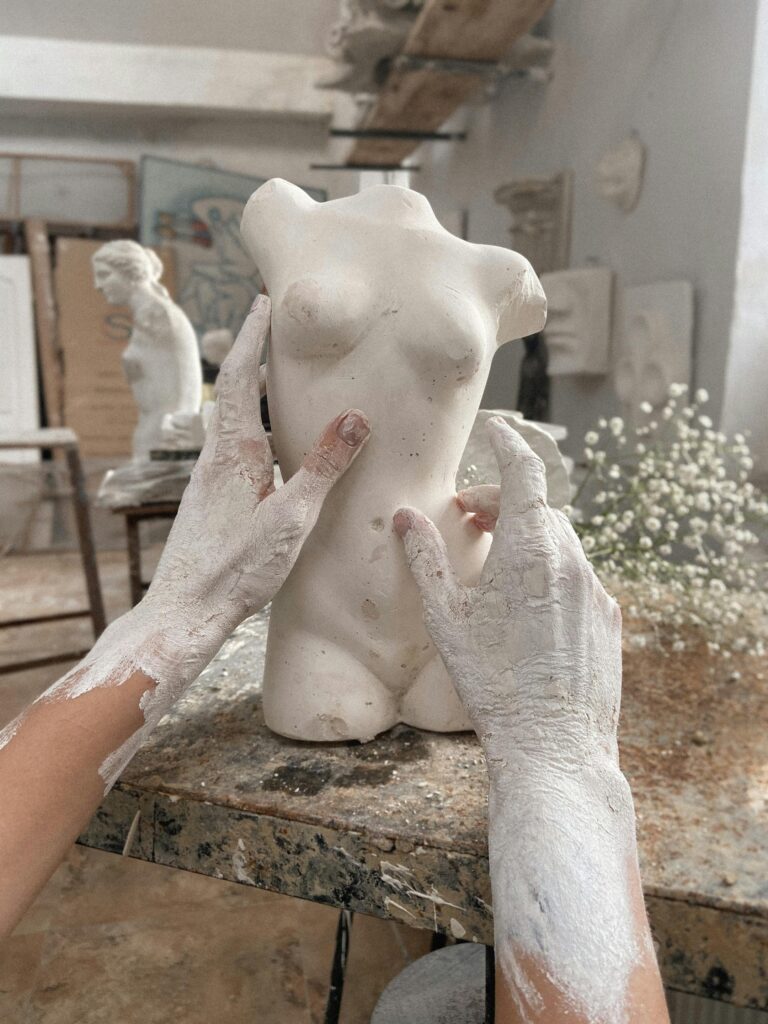Are you on a quest to achieve flawlessly straight hair? If so, you’re probably wondering which hair straightening method is best suited for you. This article delves into the various techniques available, from traditional flat irons to more advanced treatments like Brazilian blowouts and Japanese straightening. You’ll discover the pros and cons of each method, factors to consider based on your hair type, and how to maintain your sleek new look. Get ready to transform your tresses and find the ideal straightening solution for your hair! Have you ever wondered, “Which hair straightening method is better?” With so many options available, it’s easy to get overwhelmed trying to figure out which method suits you best. Whether you’re seeking silky, smooth locks for a special occasion, or a more permanent solution for managing your hair, understanding the various hair straightening options is crucial. Each method has its own set of pros and cons, so let’s explore what’s available!
Understanding Hair Straightening
Before diving into the different types of hair straightening methods, it’s essential to understand why you might want to straighten your hair and what to consider beforehand. Hair texture, type, and overall health play significant roles in how effective a particular method might be for you.
Why Straighten Your Hair?
Straightened hair can dramatically change your look, making it versatile and manageable. There are several reasons why you might want to straighten your hair:
- Style Versatility: Straight hair can be easily styled in various ways, allowing you to change your look effortlessly.
- Manageability: It can make your hair more manageable, reducing frizz and tangles.
- Professional Appearance: Straightened hair often appears sleek and polished, which can be beneficial in professional settings.
Factors to Consider
Before deciding on a hair straightening method, consider the following factors:
- Hair Type: Is your hair curly, wavy, or straight? The natural texture plays a significant role in how well a method will work.
- Hair Health: Consider the current health of your hair; damaged hair might need a more gentle approach.
- Desired Longevity: Do you want a temporary solution or a permanent fix?
- Maintenance: Some methods require more upkeep than others.
- Cost: Budget can also be a determining factor.
Types of Hair Straightening Methods
There are various methods to straighten hair, ranging from temporary to permanent options. Here’s a breakdown of some popular methods: traditional heat straightening, chemical straightening (relaxers and perms), keratin treatments, and Japanese thermal straightening.
Traditional Heat Straightening
Commonly used for its immediacy, heat straightening involves using tools like flat irons or blow dryers. This method is temporary but popular due to its convenience.
Flat Irons
Flat irons are one of the most common tools used for hair straightening.
Pros:
- Convenience: Quick and easy to use.
- Versatility: Can also be used for creating curls or waves.
Cons:
- Heat Damage: Regular use can cause significant heat damage.
- Temporary: The results only last until the next wash.
Blow Drying
Blow drying combined with a round brush can also achieve straight hair.
Pros:
- Adds Volume: Can add body and volume to hair.
- Works for Various Hair Types: Effective on different hair textures.
Cons:
- Requires Skill: Can be challenging to master the technique.
- Heat Damage: Similar to flat irons, it can cause heat damage over time.
Chemical Straightening
Chemical straightening involves altering the hair’s structure to achieve straightness. This category includes relaxers and perms.
Relaxers
Relaxers use chemicals to break down the hair’s natural curl pattern, resulting in straight hair.
Pros:
- Long-lasting: Results can last several months.
- Effective: Works well on very curly or coarse hair.
Cons:
- Strong Chemicals: Can cause hair damage and scalp irritation.
- Re-growth Maintenance: Requires touch-ups on new growth every 6-8 weeks.
Perms
While perms are traditionally used to curl hair, some variations straighten hair.
Pros:
- Semi-permanent: Lasts longer than heat straightening.
- Customizable: Can be tailored to achieve varying degrees of straightness.
Cons:
- Chemical Exposure: Involves harsh chemicals that can damage hair.
- Professional Required: Best performed by a trained stylist.
Keratin Treatments
Keratin treatments infuse the hair with the protein keratin, smoothening and often straightening the hair.
Pros:
- Smoothing Effect: Reduces frizz and adds shine.
- Less Damaging: Considered less harmful than other chemical treatments.
Cons:
- Temporary: Results typically last around 3-5 months.
- Costly: Can be expensive.
Japanese Thermal Straightening
Japanese thermal straightening, also known as thermal reconditioning, is a permanent hair straightening method that uses both chemical and heat processing.
Pros:
- Permanent: Results are long-lasting and can only be reversed by cutting off the treated hair.
- High Shine: Hair often looks glossy and healthy.
Cons:
- Lengthy Process: Can take several hours to complete.
- Costly: Typically more expensive than other methods.

Comparing the Methods
It can be helpful to look at the comparison table to understand better which method might work best for you based on different factors such as hair type, longevity, and cost.
| Method | Hair Type | Longevity | Cost | Damage Potential | Maintenance |
|---|---|---|---|---|---|
| Flat Iron | All | Temporary | Low | High | Low |
| Blow Drying | All | Temporary | Low | Moderate | Low |
| Chemical Relaxers | Curly, Coarse | Long-term | Moderate | High | Moderate (touch-ups) |
| Perms (Straightening) | Wavy, Curly | Semi-perm | Moderate | High | Moderate |
| Keratin Treatments | Wavy, Curly | 3-5 months | High | Moderate | Low |
| Japanese Thermal Straightening | Curly, Wavy | Permanent | High | High | High |
Choosing the Right Method
Choosing the right hair straightening method depends greatly on your personal hair goals, type, and lifestyle. Here are some tips to help you make the best decision:
For Temporary Straightening
If you’re looking for a quick, non-committal way to straighten your hair for a day or a night out, heat straightening options like flat irons and blow drying are ideal. They provide fast results but remember to use heat protectants to minimize damage.
For Long-term Results
For longer-lasting results that don’t require daily upkeep, consider chemical straightening or keratin treatments. Both provide extended periods of straightness but keep in mind the associated damage and maintenance requirements.
For Permanency
If you’re tired of dealing with curly or wavy hair and want a permanent solution, Japanese thermal straightening could be the method for you. Though it’s a more significant investment in time and money, the results can be transformative.

Maintenance Tips
Regardless of the method you choose, proper maintenance is key to keeping your hair healthy and ensuring prolonged results. Here are some maintenance tips for different straightening methods:
After Heat Straightening
- Use Heat Protectants: Always use a heat protectant spray before styling.
- Deep Conditioning: Regularly deep condition your hair to combat heat damage.
- Avoid Daily Use: Limit heat straightening to prevent excessive damage.
After Chemical Treatments
- Moisturize Often: Keep your hair moisturized to prevent breakage.
- Use Sulfate-free Shampoo: These shampoos are gentler and help maintain the treatment.
- Protect your Hair: Use a satin or silk pillowcase to reduce friction and maintain smoothness.
After Keratin Treatments
- Wait Before Washing: Avoid washing your hair for the first 72 hours post-treatment.
- Use Keratin-friendly Products: Opt for shampoos and conditioners designed to extend the life of your keratin treatment.
- Avoid Salt Water: Salt water can strip the keratin from your hair, shortening the treatment’s longevity.
After Japanese Thermal Straightening
- Avoid Sun and Chlorine: Limit exposure to direct sun and chlorine to maintain the treatment’s effects.
- Regular Trims: Get regular trims to prevent split ends and maintain the treated look.
- Use Heat Protectants: Even though your hair is straightened, continue to use heat protectants when styling with heat tools.
Final Thoughts
Choosing the right hair straightening method can be a game-changer for your hair care routine. Whether you prefer the simplicity and temporary nature of heat straightening or the more permanent options like chemical treatments or Japanese thermal straightening, there’s a method that’s perfect for your hair type and lifestyle.
Remember, the key to beautiful hair lies not just in the straightening method you choose but also in how well you maintain your hair thereafter. Treat your locks with care, and they’ll reward you with shine, smoothness, and manageability. Happy straightening!




